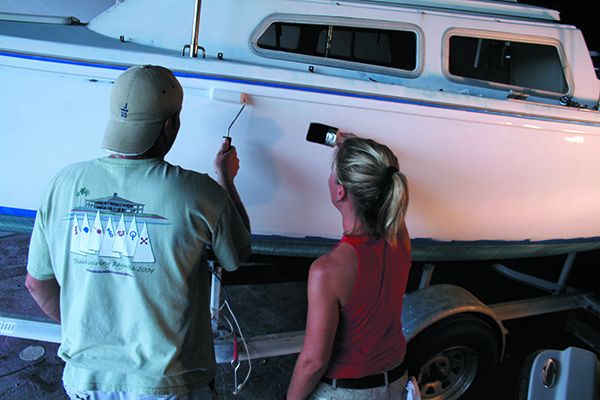
A little chemical sleuthing can help you nail down a safe substitute.
Ever pull out a recipe, only to realize you are missing some crucial spice? A quick Google search of “substitutions” will provide a mix of other things that you do have on hand that will produce the same general results. Although our first advice will always be to go with the manufacturer’s recommended solvent, there will come a time when the store is either out of stock or far away, and work must go on. We’re going to over-simplify, but as long as you’re working in small batches, there are generic substitutions that work.
Match solvent type
First, read the safety data sheet (SDS) and spec sheet to learn what solvents were used in the paint and in the recommended solvent. Some of the terms will be vague (petroleum distillate) and often the smell will provide additional clues.
We’re not suggesting sticking your nose in the can, but if it is strong, you’ll notice. If it smells of naptha or xylene, that suggests it is a naphthenic solvents with a high Kari-butanol value (Kb). Or perhaps it smells more like nail polish, which suggests acetone or MEK. If it is sweet and fruity, the more likely solvent is ethyl acetate.
Is it pungent, reminiscent of Formula 409? Then it’s probably glycol ether. The most common glycol ether, ethylene glycol monobutyl ether (also called butyl cellosolve, or EB glycol ether) is available through a number of on-line retailers for about $50/gallon.
Is it nearly odorless? Then the solvent is paraffinic, like odorless mineral spirits. Try to match like with like and mix several things if need be.
Match the Drying Rate
Thinners for two-part coatings must evaporate completely before the coating gels. If not, they will reduce the paint’s hardness. This is why thinning epoxy is generally a bad idea. Trapped solvents can also cause poor bonding.
Brushing solvents must not dry too quickly or the coating will not self-level. It will be impossible to keep a wet edge, critical when trying to roll and tip. Xylene will thin many coatings and it will also dry too quickly for many of them.
Bottom paints, on the other hand, need to dry quickly, particularly when touching up a pad spot while the boat is in the sling. Bottom paint resins typically require a high Kb value to disperse properly. Adding a little xylene can help.
2-Part Paints
We’re going to suggest you stay with the proprietary solvent. The only substitution we are going to suggest is that the solvent for Interlux vs. Awlgrip vs. Imron are generally interchangeable, if you have no choice.
When using a substitution, use as little as possible to minimize any change in coating properties. That said, the substitutions in the adjacent table would be our likely contenders in a pinch.

































